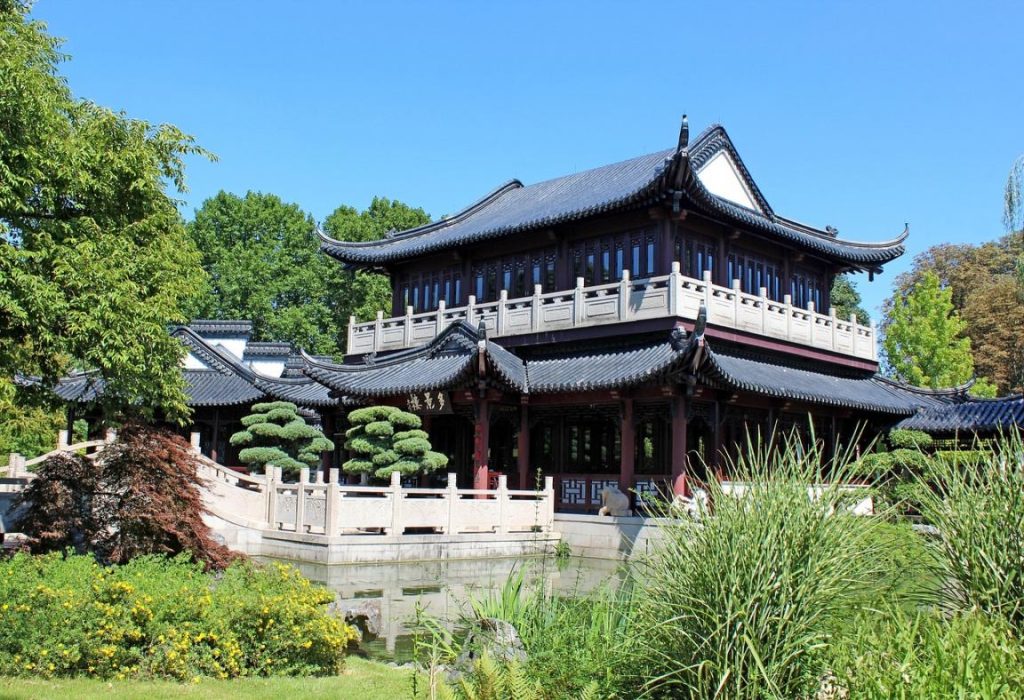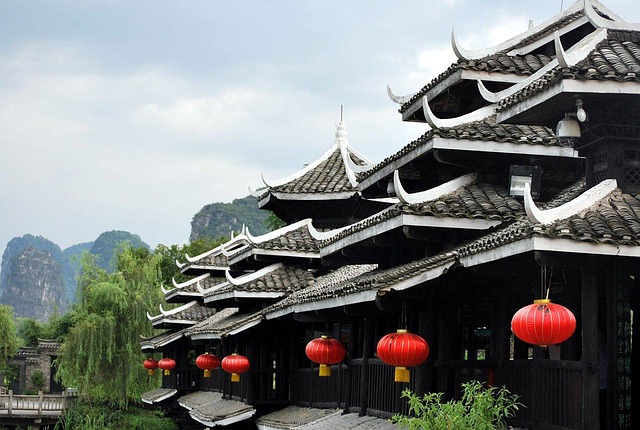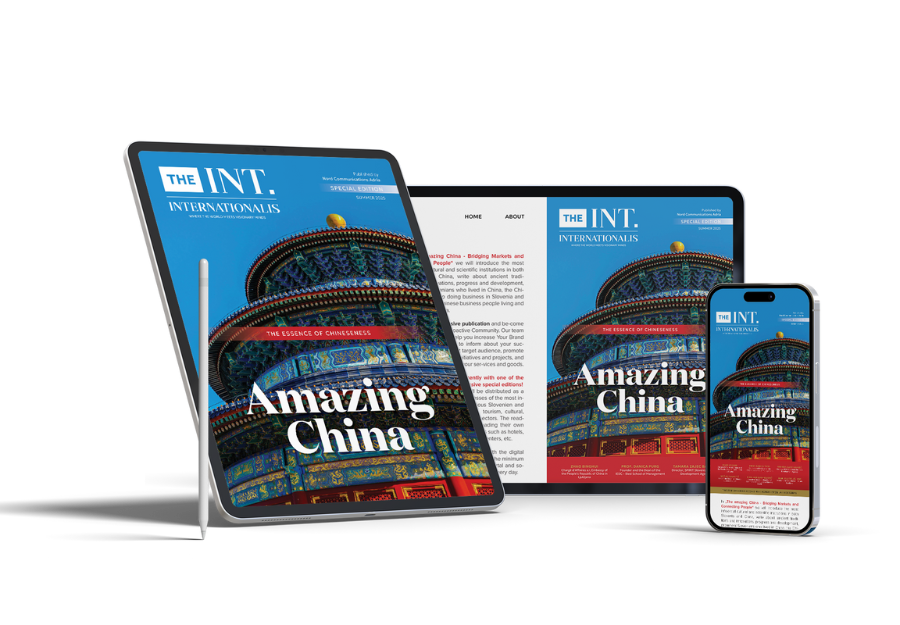World Heritage Connects Civilizations

From World Heritage Icons to Up-And-Coming Tier 4 Cities, China’s Tourism Landscape Is Embracing Sustainability, Digitalization, and Discovery

Click here to listen to the text
In recent years, China’s tourism industry has undergone a quiet transformation. While millions, not only foreign but also local, still flock to the Great Wall, the Forbidden City, and the Terracotta Warriors, a growing number of travellers—both domestic and international—are charting new paths. They are exploring Tier 4 cities, embracing eco-tourism, and seeking cultural authenticity beyond the well-worn tourist trails.
China is a mesmerizing destination where ancient history and futuristic innovation collide. Whether you’re exploring imperial palaces, hiking misty mountains, or dining in neon-lit cities, this vast country promises an adventure like no other.

Rural Roots and Urban Alternatives
The pandemic may have disrupted international travel, but it also sparked a renaissance in domestic tourism. Young Chinese travellers, in particular, have shifted their gaze inward, popularizing “Zheli You” (“Here Travel”) – a movement centered on local exploration and immersive experiences. This trend has brought lesser-known destinations into the spotlight.
Cities like Luoyang in Henan Province, known for its ancient Buddhist grottoes, or Datong in Shanxi, with its restored city walls and Yungang Grottoes, have seen a surge in interest. Once overlooked Tier 4 cities like Anshun in Guizhou or Zigong in Sichuan are gaining traction, thanks to improved infrastructure and targeted tourism campaigns.

Tech Meets Tradition
China’s tourism industry is also leveraging digital innovation to enhance the visitor experience. Museums and historical parks now offer augmented reality (AR) tours, while platforms like Xiaohongshu and Douyin (available only in China) help travellers share hidden gems in real time. AI-driven guides and QR code-based self-guided tours are increasingly common, particularly in high-traffic areas.
International tourists can use Amap instead of Google Maps and Microsoft Translator, which comes in handy when talking to locals as well as Bing internet explorer to go “online” and read web news in China. Let’s VPN is a must, even if you are on wifi. Alipay and WeChat apps are necessary to be able to pay for goods and services since all payments, from a taxi to buying a bottle of water or a candy bar, are mostly digital. Digital is efficient and useful, but nothing beats the company of a local and the kind help of a Chinese friend.
This digital embrace has not come at the expense of heritage. In places like Suzhou, known for its classical gardens, and Hangzhou, famed for West Lake, new urban planning projects are blending modern infrastructure with historical preservation. Efforts to revitalize heritage districts while maintaining authenticity are redefining urban tourism.
Did you notice that many Chinese cities have the word “zhou” in their name?
Namely many Chinese cities—including Suzhou, Hangzhou, and Guangzhou, Ganzhou—share the suffix “-zhou”. Historically, this character referred to a regional prefecture or administrative zone. In imperial times, China was divided into such jurisdictions, and cities bearing this name were often centres of governance or commerce.

World Heritage, Beyond the Icons
China currently boasts 43 UNESCO World Heritage Sites, but many remain under-visited by foreign tourists. While the Forbidden City and the Great Wall dominate itineraries, sites like the Tusi Sites in Hunan and Guizhou, or the Danxia landforms in southern China, offer equally rich cultural and natural experiences.
Even traditional hotspots are evolving. The Mogao Caves in Dunhuang have implemented strict visitor limits to protect fragile artwork, while offering high-resolution digital reproductions online. Jiuzhaigou, the fairyland-like national park in Sichuan, reopened after years of restoration following an earthquake, showcasing China’s commitment to sustainable recovery.

The Road Ahead
With the expansion of high-speed rail networks and regional airports, even remote destinations are becoming accessible. The Chinese government has made tourism a pillar of its economic development strategy, particularly in underdeveloped regions. As Tier 4 cities continue to rise, they present both an opportunity and a challenge: how to grow tourism without losing their essence.
China’s tourism future appears dynamic, diverse, and increasingly decentralized. As travellers seek meaning and connection, they are discovering that the Middle Kingdom has far more to offer than imperial palaces and panda reserves. From high-tech museums to ancient tea villages, a new chapter in Chinese tourism is being written—one that values sustainability, inclusion, and discovery.
Do you know the meaning of the term “Middle Kingdom”?
The term “Middle Kingdom” comes from the Mandarin name for China, Zhōngguó. Historically, this name translates literally as “Central Country” or “Middle Kingdom.” Ancient Chinese civilizations viewed themselves as the centre of the world—both culturally and geographically—surrounded by less developed lands. This worldview helped shape China’s identity and diplomacy for centuries, and the poetic term remains a symbol of its long-standing civilization today.
Few practical advices and a list of 10 Must-Visit Attractions in China
Most European citizens require a visa to enter China. However, some countries benefit from a visa-free policy, and Slovenia is one of them.
China is well-connected to Europe via major airlines such as Air China, Lufthansa, British Airways, and KLM. Key entry points include:
Beijing Capital International Airport (PEK) – Best for exploring northern China.
Shanghai Pudong International Airport (PVG) – Ideal for eastern China and the Yangtze River Delta.
Guangzhou Baiyun International Airport (CAN) – A gateway to southern China and Hong Kong.
China is a traveller’s dream offering:
✔ Rich history (5,000+ years of civilization)
✔ Stunning landscapes (Zhangjiajie’s Avatar Mountains, Li River karst peaks)
✔ Vibrant cities (Shanghai’s skyline, Chengdu’s pandas)
✔ Unique cuisine (Peking duck, Sichuan hotpot, dim sum)
✔ Affordable luxury (4-star hotels from €50-€100/night)
10 Must-Visit Attractions in China
- The Great Wall of China – A marvel of ancient engineering.
- Forbidden City (Beijing) – Imperial palace of Ming and Qing dynasties.
- Terracotta Army (Xi’an) – Thousands of life-sized warrior statues.
- Zhangjiajie National Park – Inspiration for Avatar’s floating mountains.
- Li River & Yangshuo – Breathtaking karst landscapes.
- Shanghai’s Bund & Pudong– Where colonial history meets futuristic skyscrapers.
- Chengdu Panda Base – See giant pandas up close.
- Hangzhou’s West Lake – A UNESCO-listed scenic masterpiece.
- Pingyao Ancient City – A well-preserved Ming-Qing era town.
- Guilin’s Reed Flute Cave – A stunning underground wonder.
Average Prices for Travelers
– 4-star hotel – €50-€120 per night
– Meal at a mid-range restaurant – €8-€20
– High-speed train ticket (e.g., Beijing-Shanghai) – €60-€100
– Entrance fees to major attractions – €5-€25
– Ice coffee – 1 euro


Get news before anyone else!
This audio recording was generated using AI technology. While every effort has been made to ensure clarity and accuracy, please note that the pronunciation of non-English words—particularly Chinese—may not always be correct. We appreciate your understanding and acknowledge that any mispronunciations are unintentional. Internationalis Media is not responsible for potential inaccuracies in AI-generated speech.